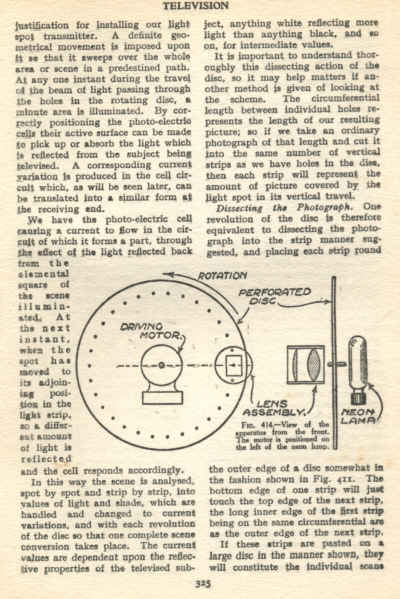
Mechanically Scanned Television
TV enthusiasts (I don't mean the ones who watch it a lot) will know the name Baird and will have heard of the Nipkow (pronounced Nipkov) disc. Those with a mechanical mind and some knowledge of electricity will understand how it operates. Here are a couple of pictures which get this kind of person excited.

The receiver consists of a similar rotating disc, the light behind the disc flashes according to the brightness detected by the photo cell. The brightness level can be transmitted as a wireless signal. Provided the disc at the receiver is synchronised to the one at the transmitter the image is reconstructed and can be viewed by looking at the disc, usually through a lens to make the picture look bigger.
It was the synchronisation of the receiving disc to the one at the transmitter which caused the most problems, careful control of motor speed with a rheostat combined with touching the edge of the disc to bring it into alignment was the early method. A pulse sent when the transmitter disc is in a particular position could be used to activate an electromagnet which would pull the disc into position, correcting a small speed error once per revolution.
The following pages explain how I built my own mechanically scanned TV based on the above principle. So far I have described the light source, motor and disc but plan to add to this later.
Please note that I'm not responsible if you do or copy anything I describe and something goes wrong!
Onwards To The Light Source......